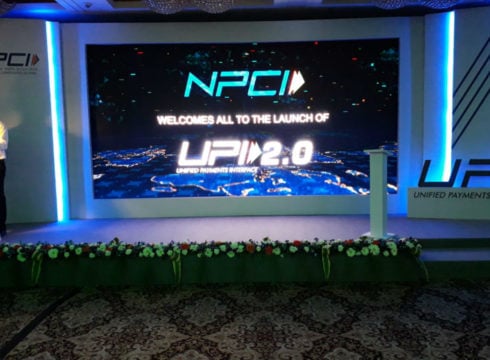SUMMARY
Post demonetisation, UPI-based online payments have soared in the country
UPI 1.0 was still geared towards P2P transactions
UPI 2.0 with its new features has a lot to offer consumers and merchants
Inc42 Daily Brief
Stay Ahead With Daily News & Analysis on India’s Tech & Startup Economy
Launched in April 2016, the Unified Payment Interface (UPI), developed by the government-assisted National Payment Corporation of India (NPCI), has been playing a critical role in encouraging digital payments in the country.’
NPCI is an umbrella organization for all retail payments in India. It was set up under the guidance and direction of the Reserve Bank of India (RBI) and the Indian Banks Association (IBA). It was on August 16, 2018, NPCI launched UPI 2.0, an updated version of UPI.
Post demonetisation, UPI-based online payments have soared in the country. From 0.93 Mn transactions in August 2016, UPI processed 246 Mn transactions as of June 2018. The number of banks actively integrating with UPI has grown more than fivefold, from 21 to 110 partner banks.
At its core, UPI is a peer-to-peer (P2P) real-time payment system accessible through a mobile platform. Its USP is that it allows users to access multiple bank accounts via a single app. UPI offers a host of banking features while allowing round-the-clock transactions, a secure single-click two-factor authentication, and – by creating a virtual identity – eliminating the need to remember card/bank details and IFSC codes.
Apps such as BHIM, Paytm, Samsung Pay, SBI Pay, Axis Pay, PhonePe, Google Tez, Chillr, and Airtel offer UPI-enabled platforms. While UPI 1.0 allowed in-app merchant payments and billing options, it was still geared towards P2P transactions.
NPCI is hoping for a push from the merchant end by offering the following incentives:
- The upgraded version will allow merchants to directly bill customers along with a payment request, which in turn will increase business transparency.
- It will allow merchants to link their business accounts to the app, a feature that was lacking in UPI 1.0.
- Merchants would be able to add overdraft accounts to the platform, allowing them to use credit and hopefully fuel more transactions.
- There’s a feature that allows a merchant to create a mandate and block a certain amount from a customer’s account for a product or service. It’s mutually beneficial; while merchants can be assured of getting paid, the customer gets a cash-on-delivery benefit.
- Reconciliations have been made easy by allocating an Acquirer Reference Number (ARN) for all transactions, similar to credit card payments. For a refund, rather than initiating a new transaction, the merchant would be able to just reverse the original payment.
UPI 2.0 with its new features has a lot to offer consumers and merchants. From a consumer perspective, the functionality of the app will increase manifold as it percolates to everyday usage. One could use it to book a taxi, pay for groceries, or purchase equity investments.
Note: We at Inc42 take our ethics very seriously. More information about it can be found here.


